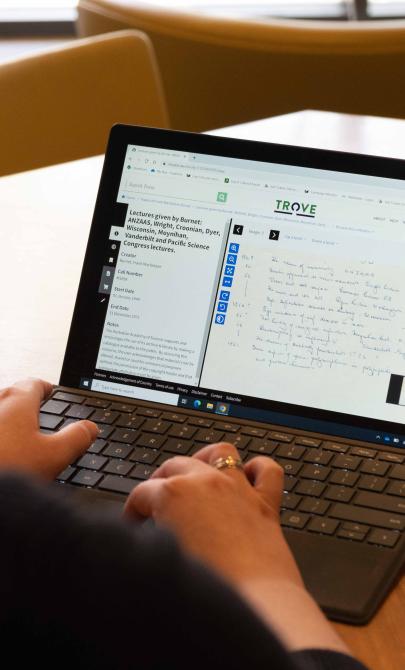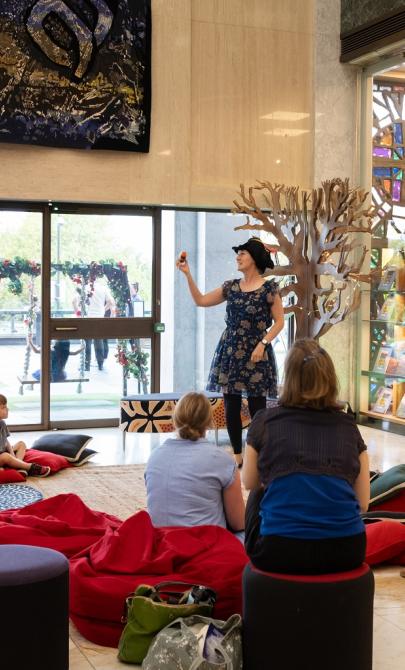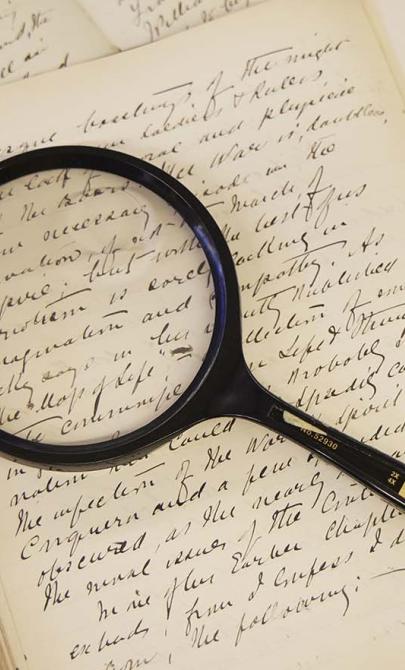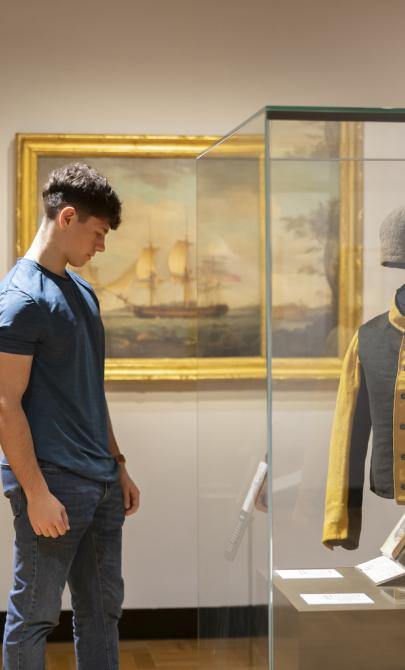Celestial Empire
About this module
Using an inquiry-based approach, this module develops students' skills as historians through engaging historical sources. Featuring sources from the National Library's collections, the resource caters for flexible approaches to suit diverse classroom contexts and learning styles.
Copyright for teachers
You can download all collection materials in this resource for education purposes. For more information, go to copyright for teachers.
Digital Classroom: Celestial Empire
Topics in this module
This module covers 5 key topics.
Each topic includes an introduction to key concepts, links to key resources in our collection and a series of learning activities that cater for a variety of classroom contexts and learning styles.
Many items featured in the exhibition, Celestial Empire: Life in China 1644-1911, are listed in Trove. It is recommended for students to explore this as an introduction to the content contained in this learning resource.
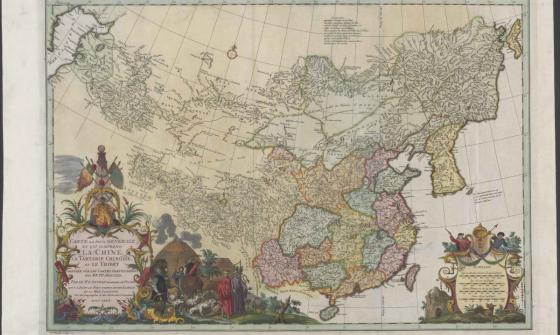
Jean Baptiste Bourguignon d'Anville & Henri Scheurleer & Gerardus Condet, Carte la plus generale et qui comprend la Chine, la Tartarie chinoise, et le Thibet, nla.gov.au/nla.obj-232293356
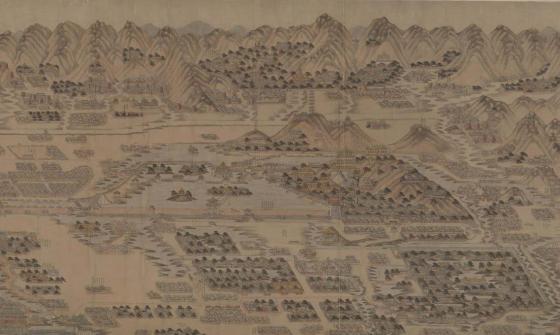
The Five Palace Gardens 1904, National Library of China
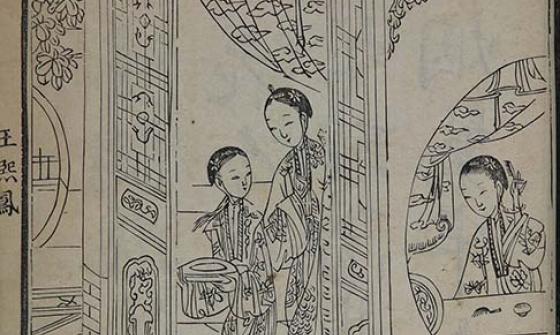
The Story of the Stone (Dream of Red Mansions), Suzhou: Book Room of Collected Literature 1791, National Library of China
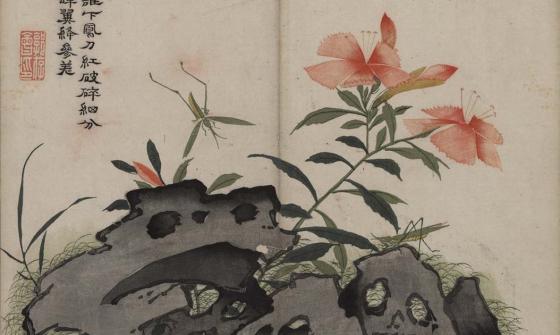
Wang Gai (1645–1707), Painting Manual of the Mustard Seed Garden, Nanjing 1679, National Library of China

The Earl of Elgin's entrance into Pekin on the 24th of October last to sign the Treaty of Peace between Great Britain and China / sketched by our special artist from the An-Tin Gate (Gate of Peace) of the Tartar Quarter, 1861, nla.gov.au/nla.obj-128383685
Introductory activity
China's ethnic groups (1644–1911)
Summaries about different Chinese ethnic groups of the last 3 centuries.
Founded as an amalgamation from different tribes in the late 16th century from what is today known as Manchuria, throughout the Qing dynasty they continued to develop their sense of identity. As the rulers of Chinese territory, they adopted culturally Chinese methods of rule, but they also remained sensitive to the different needs of some of their other territories.
The nature of being Manchu evolved during the nearly three centuries of the Qing dynasty as, like all dynasties, it engaged with and even sought to emulate high points of the past. The court did not entirely abandon its warlike origins, but members of the Manchu elite were expected to be competent horsemen and archers while also demonstrating cultivation of the gentlemen-scholar world.
The definition of the Han identity has varied over time, although throughout most of history Han Chinese have comprised the largest ethnic group in China. During the Qing dynasty Han Chinese who had entered the Eight Banners military system were considered Manchu. In the latter period of the dynasty many groups seeking to overthrow the imperial system emphasised their Han identity in order to promote nationalist sentiment.
The term Mongol generally refers to the East-Central Asian ethnic group of tribesmen brought together under Genghis Khan's reign during the thirteenth century. Mongols were known for their horsemanship and fierce military prowess, although their power began to wane during the fourteenth century. During the late sixteenth century and early seventeenth centuries the Manchus were able to subjugate the Mongols and absorb their troops. Eventually, the Qing ruled the entire territory that comprises modern day Mongolia.
Activity 1: Group presentation
- Divide students into small groups.
- Assign each group one of the major ethnic groups from Qing China.
- Ask them to prepare a short oral presentation on their group.
- Encourage students to explain how their group came to be part of (or rulers of) the Qing Empire.
Concluding activity
Before and after the Qing
Summaries of the political systems preceding and following the Qing dynasty.
The Qing dynasty replaced the Ming dynasty. The Ming had continued dominance through military rule, which was contrary to the Confucian tradition of civilian control. However, economic growth under the Ming led to increasing literacy and expanded consumption of elite culture: more people had money and time for leisure; there were fewer positions in the civil service; those failing the civil service examinations had high levels of literacy and turned to literature, medicine or teaching; and there was an increase in printed material.
The Xinhai Revolution broke out on 10 October 1911 In Wuchang, when a republican–minded military unit mutinied. Forced prematurely into action, the uprising spread to other provinces and by December Nanjing was taken. Sun Yat-sen returned to China on Christmas Day and he was installed as interim President on 29 December 1911. The Republic of China was declared on 1 January 1912. The Emperor abdicated in February 1912 and power was transferred to the Republic.
Activity 2: Group presentation
In order to situate the Qing dynasty in its global historical context ask students to create a diagram similar to those in Tim Urban's article 'Horizontal History'.
- What else was happening in the world during the Qing dynasty and immediately before and after?
Curriculum links
This resource has been developed with reference to four History content descriptions for Year 9 students in the Australian Curriculum: Humanities and Social Sciences - 'The making of the modern world'.
- Key features (social, cultural, economic, political) of ONE Asian society at the start of this period (ACDSEH093)
- Change and continuity in the Asian society during this period, including any effects of contact (intended and unintended) with European power(s) (ACDSEH094)
- The position of the Asian society in relation to other nations in the world around the turn of the twentieth century (that is 1900), including the influence of key ideas such as nationalism (ACDSEH142)
- The significance of ONE key event that involved the Asian society and European power(s), including different perspectives of the event at the time (ACDSEH141)
